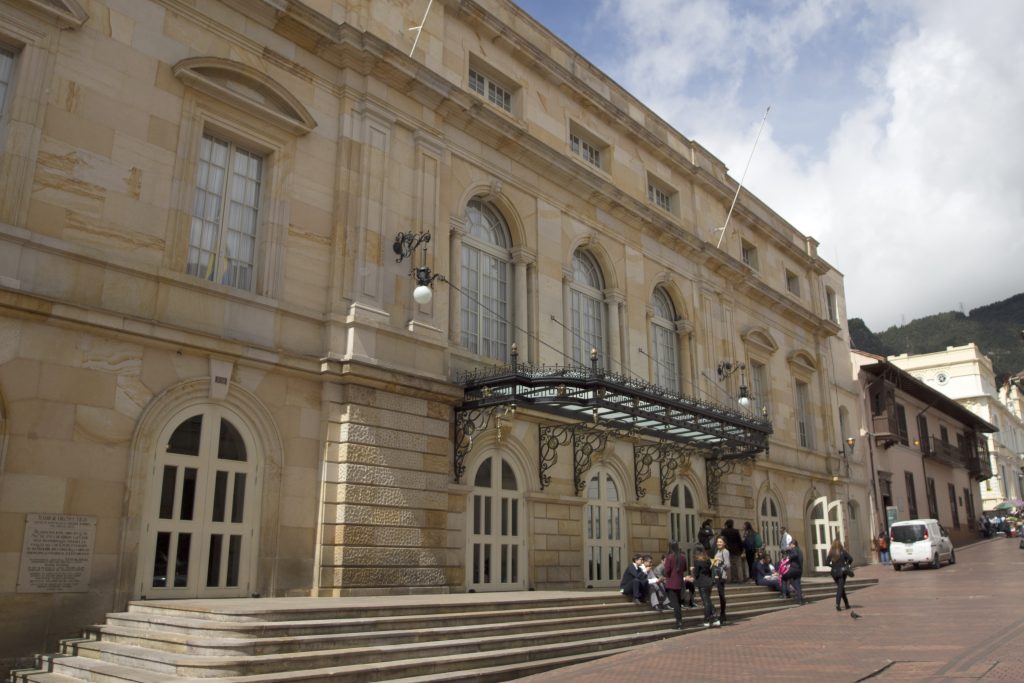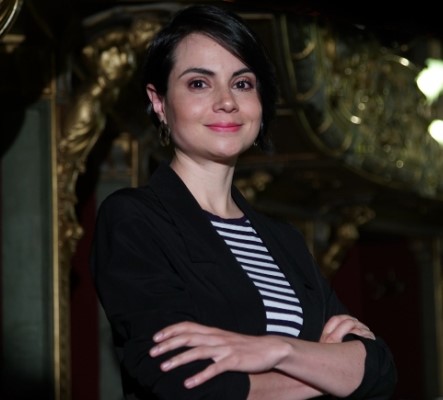Teatro Colón de Bogotá, un teatro para todos los colombianos
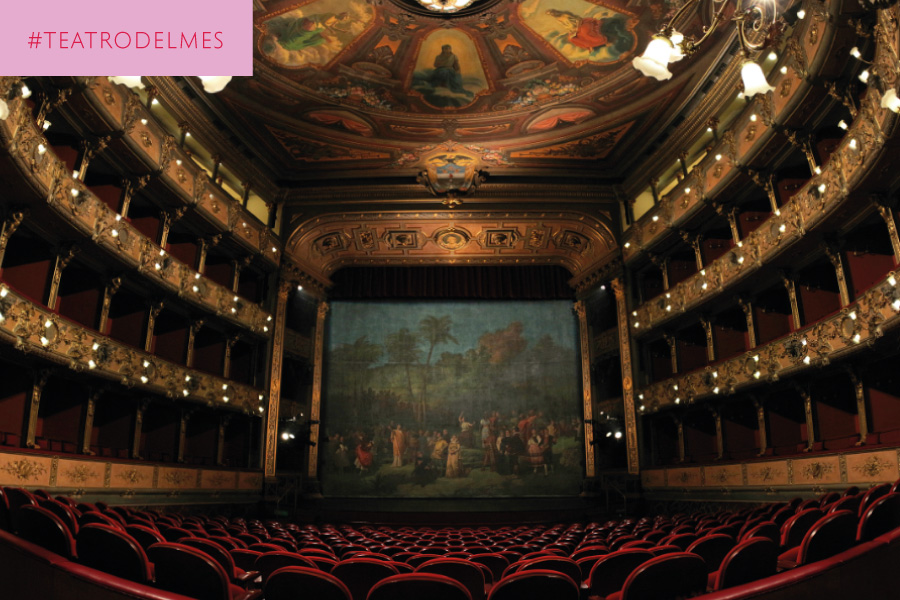
Construido entre 1885 y 1895, este coliseo ha sido nombrado como uno de los edificios culturales más sorprendentes por su imponente arquitectura y ornamentación. Está ubicado en pleno barrio de la Candelaria en la capital colombiana, a pasos de otros maravillosos edificios patrimoniales como la Plaza de Bolívar, el Museo de Oro y el Museo Botero. El 12 de octubre de 1892 el bautizado “Teatro de Cristóbal Colón” se inauguró con motivo del cuarto centenario del descubrimiento de América. Destacan su estilo “a la italiana”, un telón de boca que cubre el arco de proscenio, el magnífico foyer y la impresionante lámpara diseñada por Luigi Ramelli. Hoy, el Teatro Colón de Bogotá se ha convertido en el teatro nacional de Colombia y su infraestructura muestra el histórico proceso de urbanización y modernización de las capitales latinoamericanas.
Por Álvaro Molina
El “fin de siglo” – fin de siècle – latinoamericano exigía muchas cosas para las capitales latinoamericanas. Algunas se preparaban para celebrar pronto los centenarios de sus respectivas independencias. Otras se estaban convirtiendo en importantes centros de desarrollo económico, social y cultural.
Hacia las últimas décadas del siglo XIX, los epicentros culturales de Latinoamérica embellecieron sus calles con palacios, plazas, parques, jardines y teatros. Al mismo tiempo que se inauguraban teatros como el Solís en Montevideo, Santa Ana en Ciudad de México, Municipal en Santiago de Chile y Colón en Buenos Aires, Bogotá también dio un paso adelante.
En 1892, con motivo del cuarto centenario del descubrimiento de América, se inauguró el Teatro Colón de Bogotá. Es un magnífico edificio cuya arquitectura “a la italiana”, pasillos y foyer ornamentados con exquisitas obras de arte y un elegante telón de boca lo convierten en uno de los teatros más destacados no solo de Latinoamérica, sino que también del mundo.
Los orígenes
La belle époque, los avances tecnológicos, la modernización e industrialización del continente demandaba que las capitales y principales ciudades se adaptaran a los cambios que este proceso conllevaba. Así, la urbanización se impuso como un factor que los gobiernos locales decidieron reforzar.
La recepción de inmigrantes, delegaciones internacionales y el circuito artístico global reclamaban ponerse al día con el progreso. La bonanza económica de algunos países latinoamericanos contribuyó a que la opulencia y el lujo se instalaran como una tendencia de goce estético para las élites criollas.
Hacia la última década del siglo XIX, se asomaba la conmemoración de un hito que recordaba los orígenes del continente americano. Se cumplirían cuatrocientos años de su descubrimiento a manos de la expedición que el navegante Cristóbal Colón lideró en el siglo XV.
Más allá de intentar encontrar una “identidad propia” en sus respectivas culturas, diferentes países latinoamericanos invitaron a destacados arquitectos, diseñadores, ingenieros y ornamentadores europeos para añadirle un toque de refinamiento posromántico a sus capitales.
Uno de estos destacados arquitectos fue el italiano Pietro Cantini. Nacido en Florencia – cuna de la belleza en el diseño de edificios – en 1847, Cantini vivió por casi 50 años en Colombia. Llegó alrededor de 1880 a los entonces llamados “Estados Unidos de Colombia” invitado por su amigo Cesare Fortini.
La oferta que Fortini le hizo al arquitecto florentino era suculenta; el gobierno colombiano necesitaba remodelar el Palacio nacional y Cantini había sido el elegido por el vicecónsul colombiano Rafael García.
En 1881, Cantini reanudó la construcción del Capitolio Nacional de Colombia, cuya obra había sido suspendida por las continuas guerras civiles en el país. La remodelación del frontis del edificio estuvo a cargo del arquitecto florentino, pero en 1885 estalló un nuevo conflicto que obligó a nuevamente interrumpir los trabajos.
En búsqueda de la modernidad
Corría 1885 y Pietro Cantini ya estaba cimentando su carrera como arquitecto en Colombia. Con un presupuesto algo más generoso luego de la guerra civil, se abrió una escuela de oficios que formó a 162 obreros en los procesos necesarios de construcción y decoración.
Como una reminiscencia a los antiguos colegios de arte renacentistas, los maestros a cargo de esta nueva escuela fueron connotadas personalidades como el ornamentador suizo Luigi Ramelli, el escultor italiano Cesare Sighinolfi y a los pintores Filipo Mastellari y Giovanni Menarini.
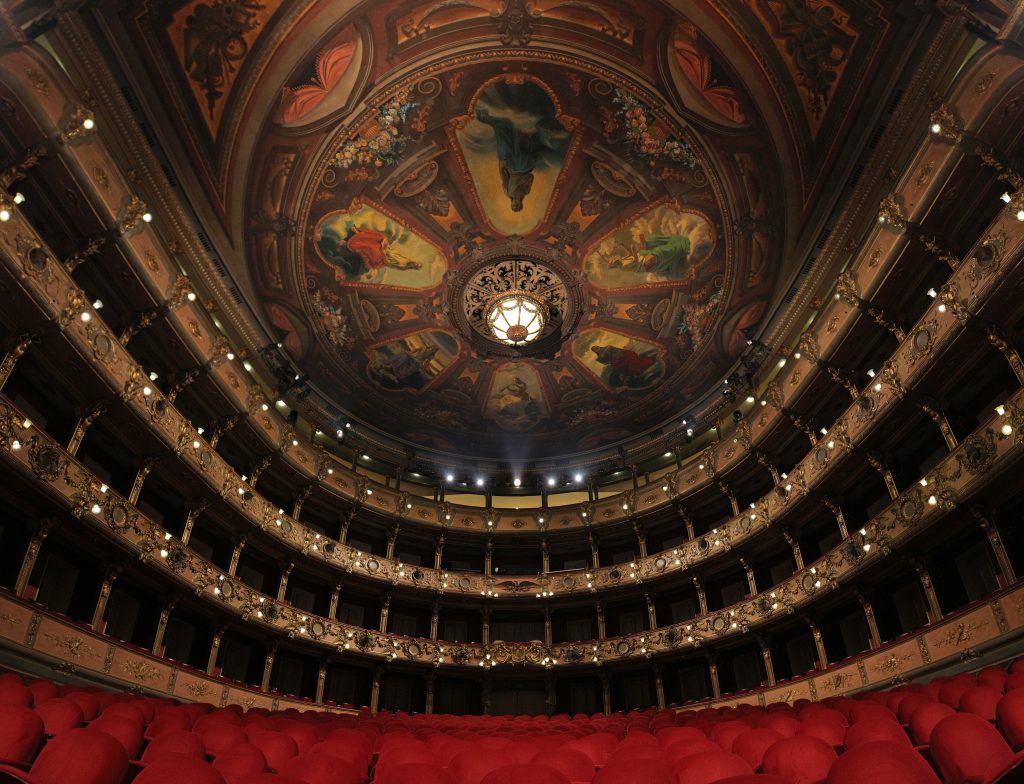
Sala principal del teatro, donde se aprecia la fastuosa lámpara del plafón y el fresco en el techo. Foto: Andrés Gómez
La modernidad urbana y en edificaciones había llegado a Bogotá. Donde hoy se emplaza el Teatro Colón, anteriormente se erigieron otros dos teatros de variedades. Primero fue el Coliseo Ramírez, construido a fines del siglo XVIII. Posteriormente, el Coliseo fue remodelado a principios del siglo XIX y dio lugar al Teatro Maldonado.
En 1885, con un afán de innovación, el entonces presidente Rafael Núñez decidió expropiar el Teatro Maldonado y exigió la construcción de un verdadero teatro “a la italiana”.
“A la italiana” desde Latinoamérica
Estamos en la calle 10 de Bogotá, entre las avenidas Carrera 6 y Carrera 5B. A unas pocas cuadras de distancia está el Capitolio Nacional, el Palacio Arzobispal y la imponente Catedral Primada de Colombia.
Si miramos hacia adelante, se nos alza el frontis del Teatro Colón, con sus colores blanquecinos, arenosos y cremosos. Entramos. Nos recibe un vestíbulo – o foyer – decorado con fastuosas columnas y detalles de ornamentación en el cielo. Al ser una sala cuyo origen era recibir a la aristocracia y clase dirigente antes de los espectáculos, los adornos rebosan elegancia y refinamiento. Si miramos hacia arriba, lo que más destaca es el fresco que adorna el techo de la sala, con musas que representan el mestizaje que caracteriza a Colombia.
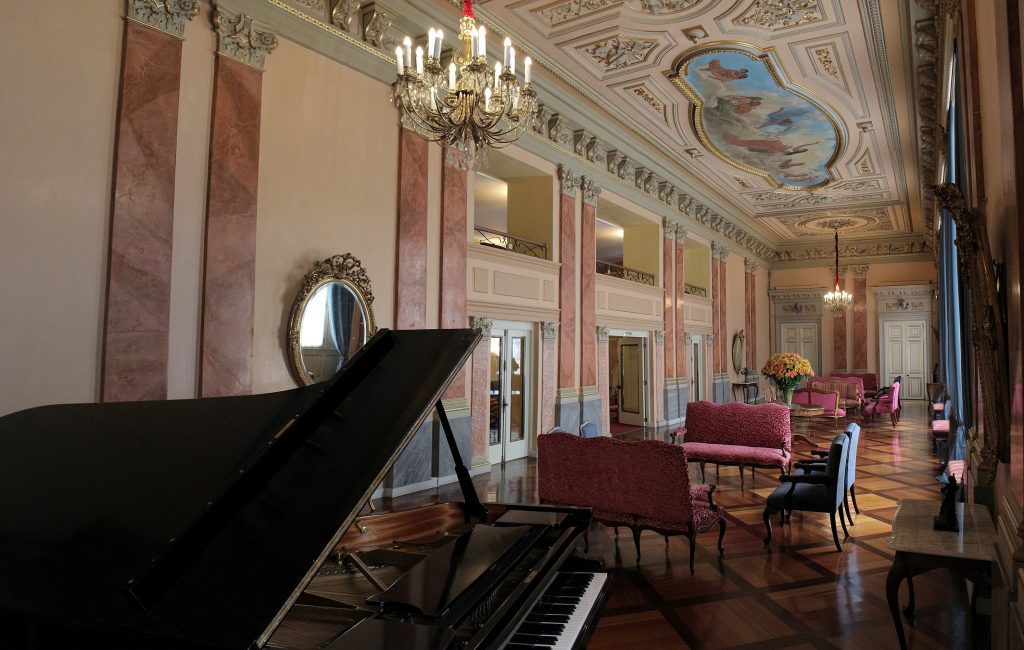
El lujoso vestíbulo del teatro es un recuerdo de los tiempos en que la aristocracia colombiana esperaba antes de entrar a las obras y espectáculos. Foto: Andrés Gómez
Una vez al interior de la sala principal del teatro – con forma de herradura o diseño “a la italiana” – nos encontramos con el maravilloso telón de boca que cubre el arco de proscenio. Fue un encargo directo del Presidente Rafael Núñez al pintor italiano Annibale Gatti, quien lo realizó desde Italia especialmente para el teatro. La pintura es de un estilo neoclásico y tiene la particularidad de ser una especie de “juego” operático; se retratan 36 personajes de diferentes óperas, tales como Hamlet, Rigoletto y Fausto, además de indígenas y conquistadores.
Si miramos hacia arriba en la sala, vemos la sofisticada y exquisita lámpara del plafón principal. Fue diseñada por Luigi Ramelli e instalada para el día de la inauguración del Teatro. En 1948, la lámpara de Ramelli fue reemplazada por una de cristal traída de Checoslovaquia. Pero esta modificación no salió gratis; a finales del siglo XX, su peso y tamaño excesivos estaban causando daños en el plafón y reducían la visibilidad desde la galería. Como una vuelta a los orígenes, se restituyó la hermosa lámpara de Ramelli, la que continúa iluminando la sala principal hasta el día de hoy.
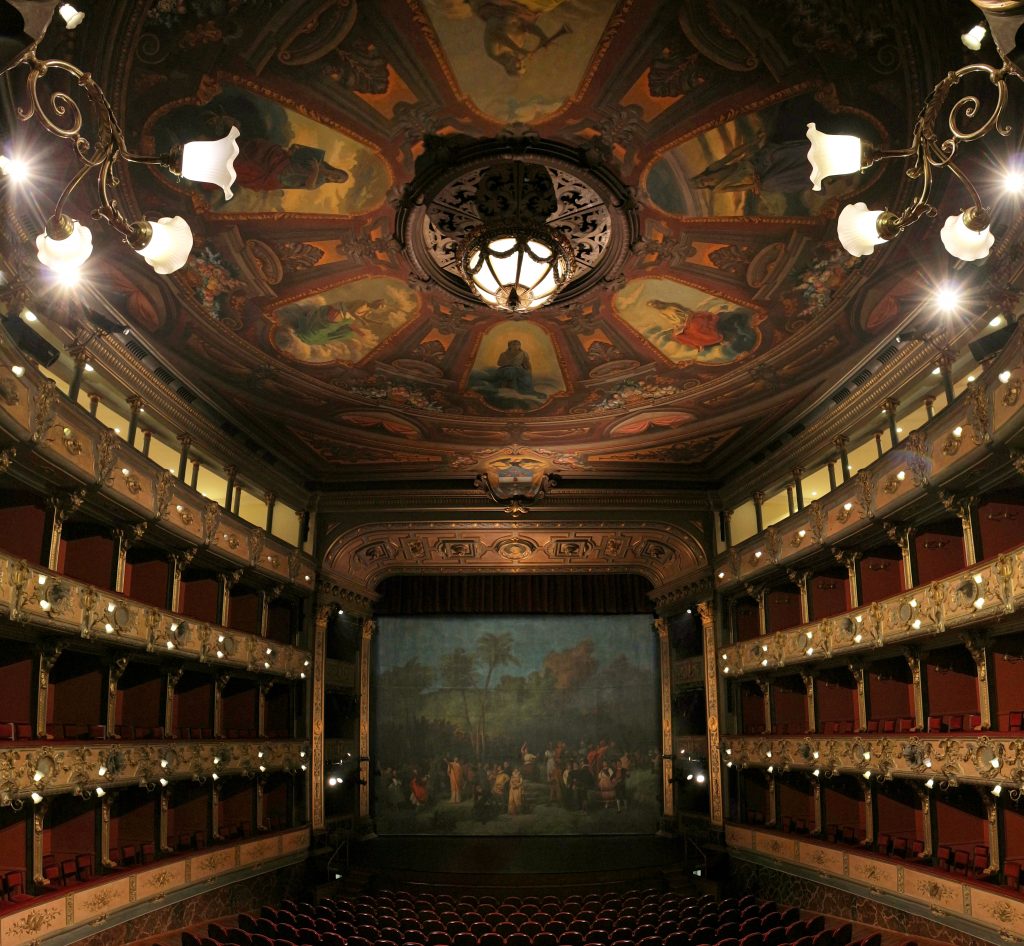
En el escenario destaca el maravilloso telón de boca, obra del italiano Annibale Gatti. En él, se pueden reconocer distintos personajes de la ópera. Foto: Andrés Gómez
Según la organización del Teatro Colón:
“Esta lámpara fue desde un inicio eléctrica. Para este fin, y puesto que no había redes de abastecimiento en la Bogotá de entonces, se ubicó en el sótano del teatro una planta a vapor que consumía hasta tres cargas de carbón por función. En 1894, por solicitud del presidente, esta planta dotó de luz eléctrica al Palacio Presidencial que se encontraba del otro lado de la calle 10”.
“Nuestro teatro de ópera”
Hoy, el Teatro Colón de Bogotá es la sede de la Orquesta Sinfónica Nacional de Colombia. Como escribe Javier Hernández en un extenso artículo para la revista Tempo, uno de los principales valores culturales del Teatro Colón es:
“Un fértil semillero de talentos colombianos en el campo de la lírica en el siglo XX y XXI. Hombres y mujeres que han logrado tener una carrera internacional reconocida. […] Carlos Julio Ramírez, Martha Senn, Valeriano Lanchas, Carmiña Gallo, Juanita Lascarro, Marina Tafur, Zoraida Salazar, María Pardo, Betty Garcés, Francisco Vergara, Manuel Contreras y tantos otros […]”.
Símbolo de la cultura y las artes en Colombia, el Teatro Colón muchas veces es referido como “mi teatro” o “nuestro teatro” de ópera. Un orgullo, claro. Porque es un teatro que acompaña al público capitalino en su historia desde su inauguración en 1892. Ha visto pasar conflictos políticos y sociales, cambios y modernizaciones e, incluso, uno de los hitos más reveladores de la reciente historia colombiana; el 26 de noviembre de 2016, fue el lugar escogido para firmar el acuerdo de paz entre el gobierno colombiano y las FARC, terminando una reyerta que ya acumulaba varias décadas dolorosas.
En 2020, la Ministra de Cultura de Colombia, Carmen Vásquez, anunció a la nueva directora del Teatro Colón de Bogotá. La elegida fue la gestora cultural Claudia del Valle, quien anteriormente se había desempeñado como Directora Sinfónica de la Orquesta Filarmónica de Bogotá. Entre 2015 y 2017 fue Asesora de Dirección del teatro.
La llegada de Claudia del Valle significó un refuerzo para la atracción de nuevos espectadores y además propiciar el diálogo continuo entre distintos actores culturales. Una idea clave para la gestora cultural es el intercambio entre distintas fuentes creativas a lo largo de todo Colombia y así descentralizar el desarrollo cultural. Según ella misma:
“Todos los colombianos deberían visitar el Teatro Colón en algún momento de su vida, tienen muchas formas de hacerlo, con teatro, ópera, música, espectáculos infantiles o recorriendo esta joya patrimonial en las visitas guiadas presenciales o nuestro recién inaugurado recorrido virtual. Hago un llamado a los colombianos a invertir en cultura”
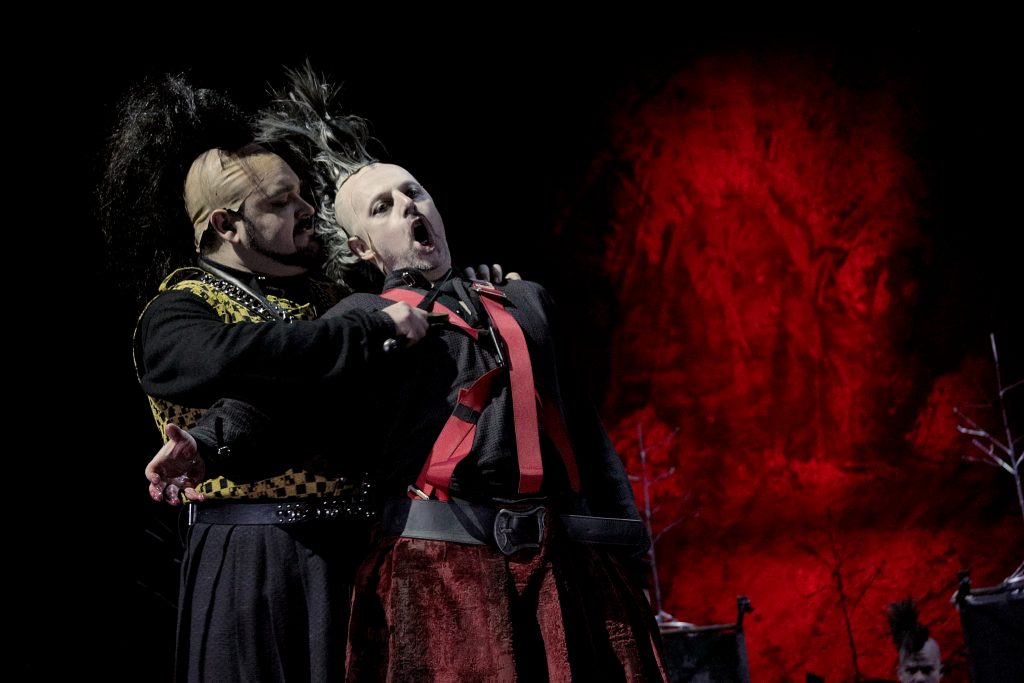
La ópera «Macbeth», en coproducción con la Compañía Estable, se estrenó con gran éxito en 2016. Es una adaptación de Joe Broderick bajo la dirección de Pedro Salazar. Foto: Andrés Gómez
Javier Hernández, en el mismo artículo para Tempo, sintetiza de forma sucinta el significado de este increíble teatro:
“Y una última razón para llamar al Teatro Colón nuestro teatro de la ópera, a la mejor usanza de la Ópera de Viena o el Teatro alla Scala de Milán, guardadas las proporciones, por supuesto, es el repertorio. Las óperas que han pasado por este escenario han visto la evolución del público capitalino. Grandes óperas, aunque con montajes limitados al estilo de Los Hugonotes de Meyerbeer o Lohengrin de Wagner en la primera mitad del siglo. También está el repertorio de siempre: la trilogía verdiana Rigoletto, La Traviata y El Trovador. Puccini con sus Madama Butterfly y Tosca. Y cómo olvidar el repertorio francés con su casi único caballito de batalla, Carmen de Georges Bizet”.


